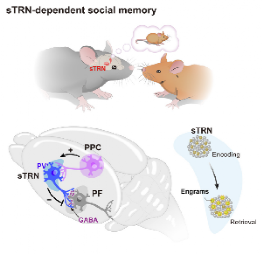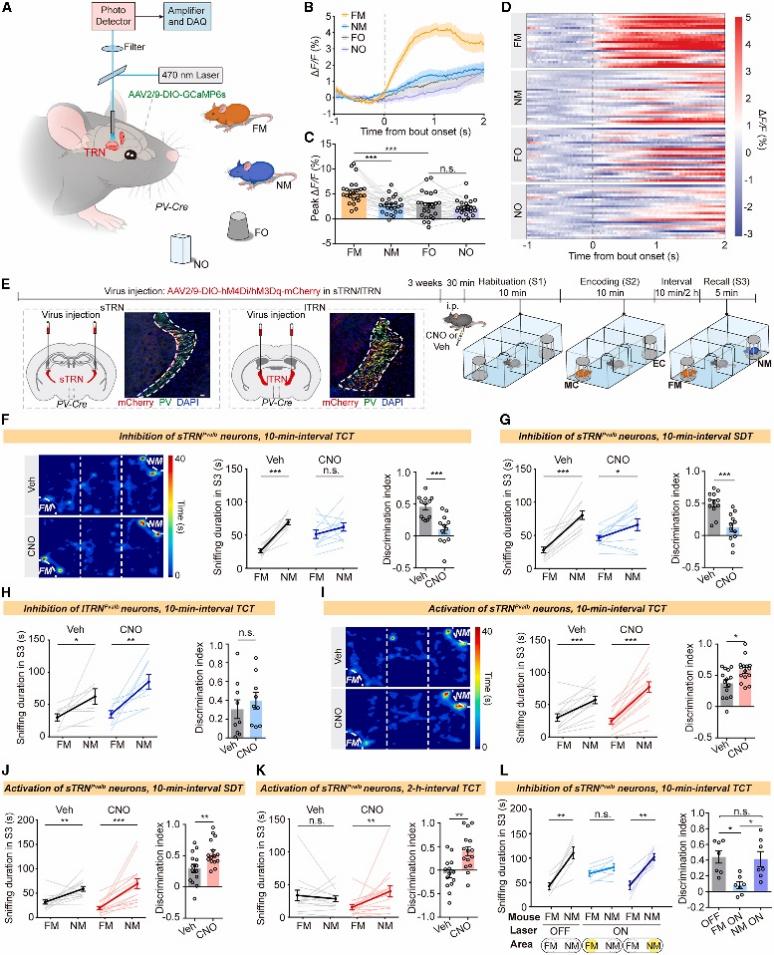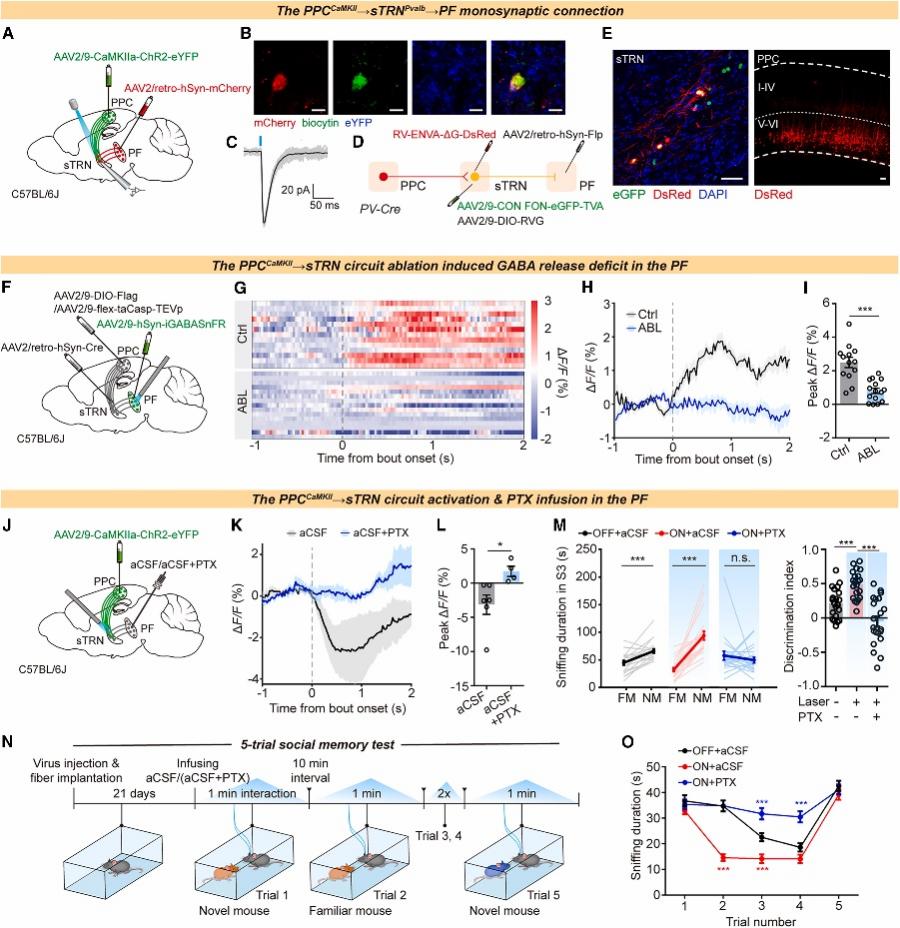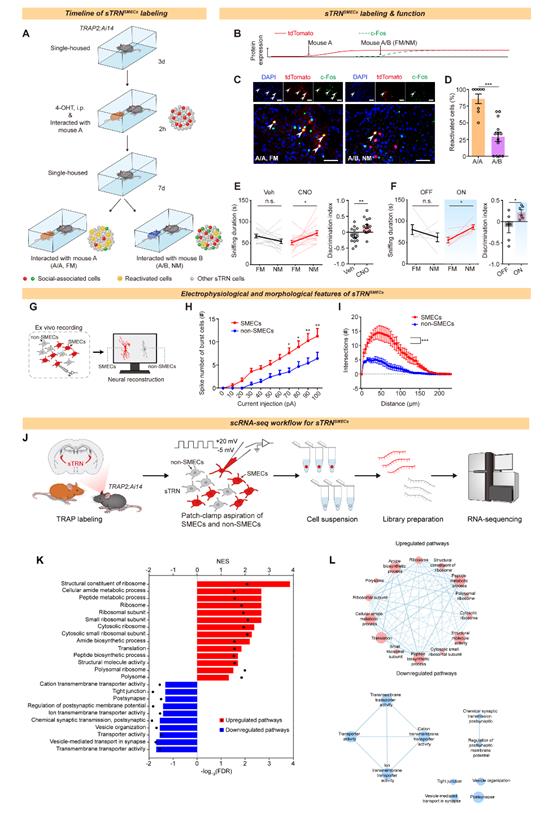On May 2, 2024, Li Yan's team from Center for Brain Science of the First Affiliated Hospital (FAH) of Xi’an Jiaotong University (XJTU) published a research article entitled "The thalamic reticular nucleus orchestrates social memory" in Neuron (IF: 16.2), elucidating the neural circuit and cellular mechanism of the sensory thalamic reticular nucleus (sTRN) in regulating social memory.

The research team proved that sTRN can bidirectionally modulate social memory through chemogenetic experiment. Fiber photometry revealed that the calcium activity of TRN neurons was significantly increased when discriminating familiar conspecifics. The activity of parvalbumin-positive neurons in the sensory thalamic reticular nucleus (sTRNPvalb) was inhibited when exposed to familiar conspecifics, and the mice showed evident social memory impairment.

Through viral tracing and ex vitro electrophysiological experiment, the research team investigated the anatomical and functional relationship between sTRNPvalb→parafascicular thalamic nucleus (PF) and posteriorparietal cortex(PPC)CaMKII→sTRN circuits, and further proved the sufficiency and necessity of sTRNPvalb→PF and PPCCaMKII→sTRN circuits in mediating social memory coding and retrieval by using optogenetics regulation of circuit activities.

The findings revealed that the PPCCaMKII→sTRNPvalb→PF circuit is a functional monosynaptic connection, and the GABA concentration in PF areas is specifically increased during social interaction and is controlled by PPCCaMKII→sTRN circuit. PPCCaMKII→sTRNPvalb→PF circuit can regulate social memory at the behavioral level.

Due to the heterogeneity of sTRN, the research team further attempted to elucidate the cellular and molecular mechanisms of sTRN in the regulation of social memory, and found that engram cells might be detected in sTRN. After the silencing of social memory in mice, the memory can be regained by artificially activating these cells. The research team subsequently found that these cells resemble other engram cells in other brain areas as previously reported: neurons have higher excitability, more complex morphological structures, and protein synthesis-related signaling pathways are up-regulated.

This study demonstrates a novel sTRN-dependent mechanism supporting social memory at the circuit level and the single-cell level, which is of significance for understanding how social memory is formed in the brain and provides a novel direction for the treatment of social memory disorders related to autism, attention-deficit/hyperactivity disorder and schizophrenia.
Professor Li Yan is the corresponding author of this article.
Article link: https://doi.org/10.1016/j.neuron.2024.04.013